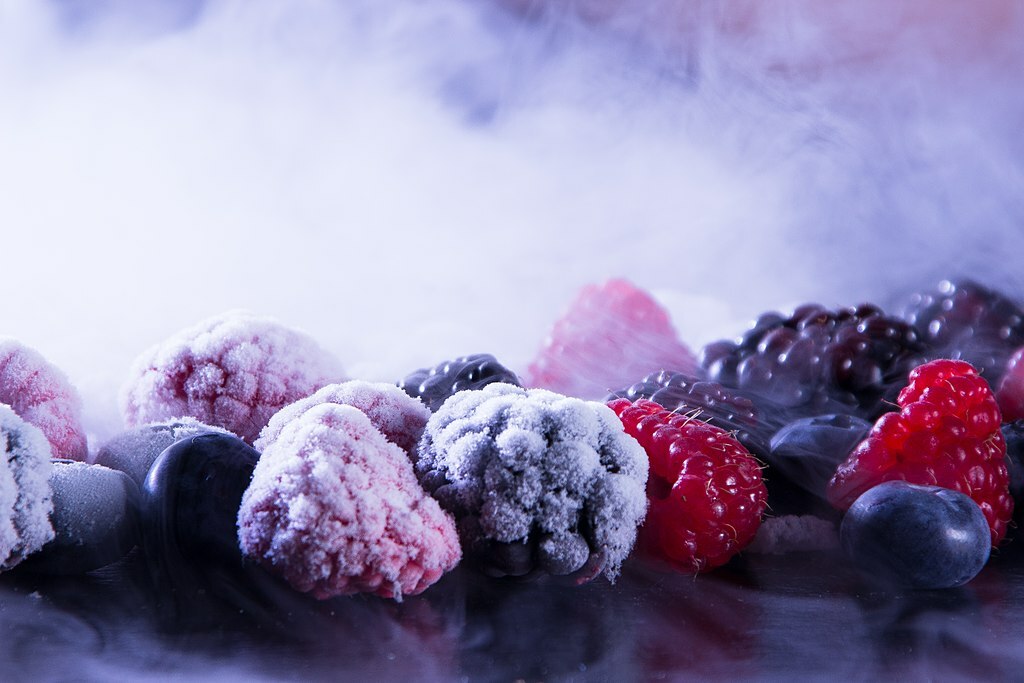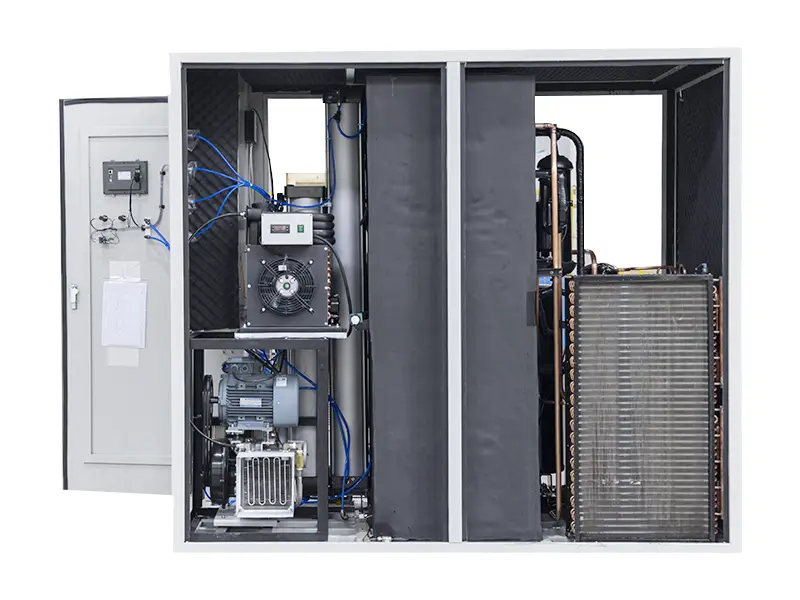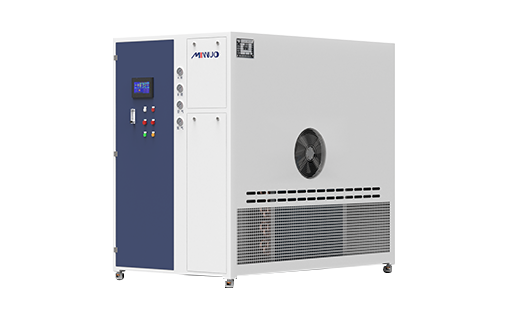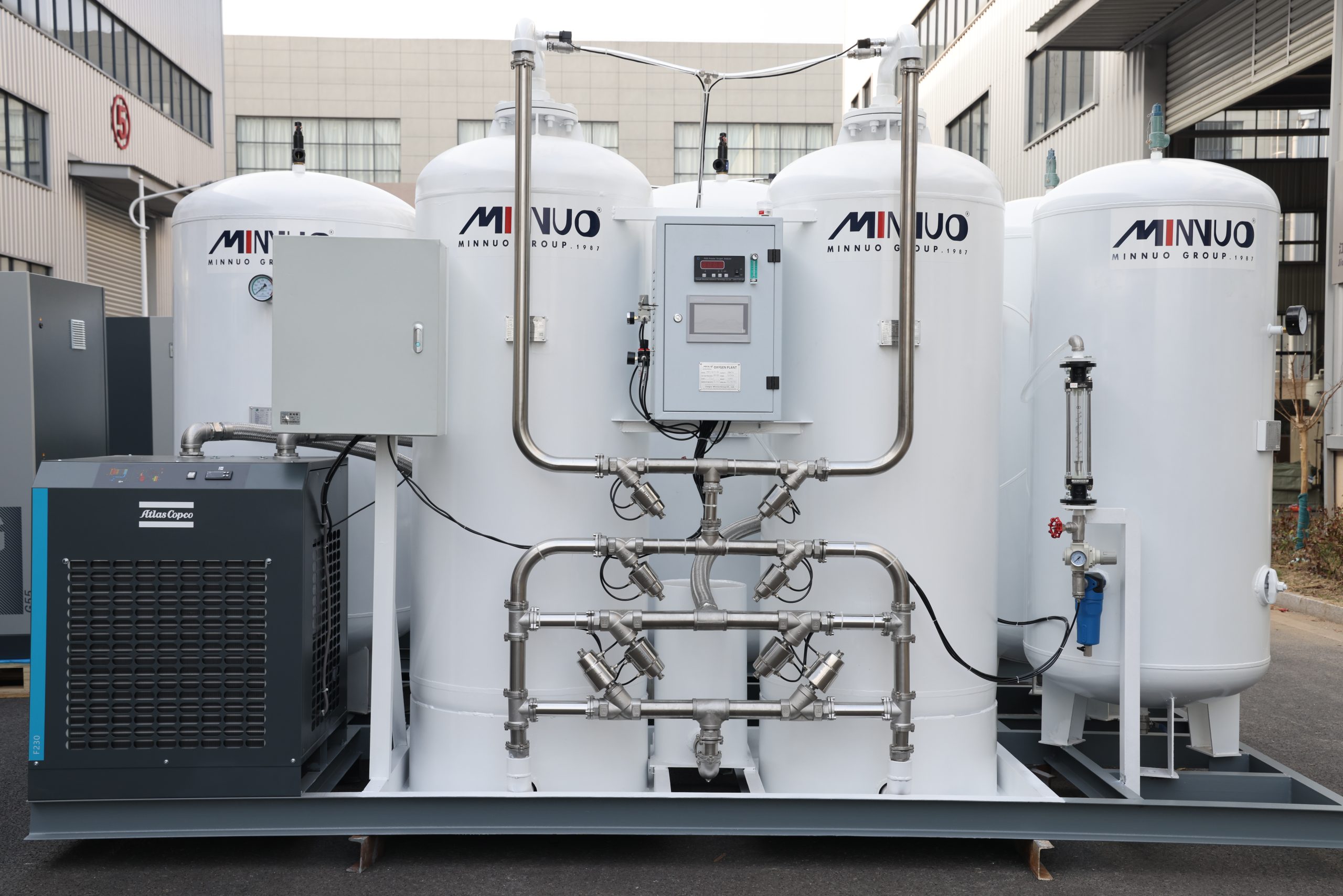Driven by both consumption upgrading and the intellectualization of the food industry, “freshness”, “nutrition” and “safety” have become the core competitive points of the industry. With its ultra-low temperature characteristic of -196℃, liquid nitrogen machines break the limitations of traditional freezing through “deep cold quick freezing” technology. They lock in food quality from the source and have become key equipment in fields such as fruits and vegetables, meat and poultry, and baking, driving the food industry into a new era of “instant freshness locking”.
I. Core Application Scenarios of Liquid Nitrogen Machines in the Food Industry
The value of liquid nitrogen machines lies in “accurately matching the freezing needs of different foods”. Their applications cover the entire chain from raw material processing to end products, with core scenarios concentrated in four major fields:
(1) Processing of Fruits and Vegetables
For perishable fruits and vegetables such as blueberries, strawberries and asparagus, liquid nitrogen machines can complete deep freezing within 30 seconds, quickly passing through the “ice crystal formation zone” of 0℃ to -5℃ to avoid cell rupture caused by slow freezing. Frozen fruits and vegetables maintain a plump shape after thawing, and the loss rate of nutrients such as vitamin C is reduced by more than 40% compared with traditional freezing. They are especially suitable for the pretreatment of fresh-cut fruits and vegetables and freeze-dried fruit and vegetable raw materials.

(2) Freshness Preservation of Meat, Poultry and Seafood
For high-protein ingredients such as steak, salmon and shrimp meat, liquid nitrogen quick freezing can form micron-sized ice crystals in muscle fibers without damaging the cell membrane structure. Taking imported salmon as an example, after liquid nitrogen treatment, the juice loss rate during thawing is reduced from 15% of traditional freezing to less than 5%, and the meat quality remains tender. At the same time, it can inhibit bacterial reproduction and reduce the risk of deterioration during cold chain transportation.
(3) Baking and Prepared Food Fields
In the prepared food industry, liquid nitrogen machines can achieve “instant quick freezing after cooking”. For example, dishes such as braised pork ribs and Kung Pao chicken can be cooled to below -18℃ within 10 minutes after being cooked, locking in the soup flavor and ingredient taste. The similarity to freshly made dishes after reheating reaches more than 90%. In the baking field, liquid nitrogen frozen dough can extend the shelf life to 3 months, and the fermentation capacity is not affected after thawing, solving the problem of raw material standardization for chain bakeries.
(4) Innovation of Featured Foods
Relying on ultra-low temperature characteristics, liquid nitrogen machines have spawned Internet-famous products such as liquid nitrogen ice cream and liquid nitrogen frozen candies. For example, liquid nitrogen ice cream undergoes instant freezing, so that the water in the cream cannot form large ice crystals, resulting in a smooth and ice crystal-free taste. At the same time, the “smoke effect” of on-site production enhances the consumption experience, becoming a traffic highlight for catering stores.

II. Core Advantages of Liquid Nitrogen Machines Compared with Traditional Freezing Equipment
Compared with traditional freezing methods such as air cooling and water cooling, the advantages of liquid nitrogen machines are reflected in three major dimensions: “efficiency, quality and cost”, directly solving the core pain points of food enterprises:
(1) Exponential Improvement in Freezing Efficiency
Traditional freezing equipment takes several hours to cool food to -18℃, while liquid nitrogen machines can achieve “second-level cooling” relying on the principle of direct heat exchange. For example, a 500g chicken breast can be cooled from room temperature to -18℃ in only 2 minutes, improving production line efficiency by 5-8 times. It is especially suitable for the “instant processing” needs of fresh food, reducing the deterioration loss of raw materials at room temperature.
(2) Maximizing the Retention of Food’s Original Quality
The ultra-low temperature environment can instantly solidify the moisture in food, avoiding the “large ice crystals” formed by traditional freezing from damaging the cell structure. Data shows that the hardness of vegetables frozen by liquid nitrogen is 30% higher than that of traditional freezing after thawing, and the protein solubility of meat is increased by 15%. It fundamentally solves the industry problem of “softening, drying and juice loss after thawing”, and at the same time reduces the oxidation of nutrients, conforming to the healthy consumption trend.
(3) Significantly Extending Shelf Life and Reducing Loss Costs
Liquid nitrogen quick freezing can quickly inhibit the activity of microorganisms in food (such as Escherichia coli and mold), so that the shelf life of food under -18℃ storage conditions is extended by 2-3 times compared with traditional freezing. Taking fresh-cut lettuce as an example, the shelf life of traditional freezing is about 7 days, and it can be extended to 21 days after liquid nitrogen freezing, greatly reducing the inventory loss and logistics costs of food enterprises.
(4) Safety, Environmental Protection and Flexible Adaptability
Food-grade liquid nitrogen is an inert gas, which has no residue or pollution after vaporization, meeting the food safety production standards. At the same time, the volume of liquid nitrogen machines can be customized, covering from small desktop equipment (suitable for catering stores) to large-scale assembly line equipment (suitable for food factories). No complex machine room construction is required, and the installation cycle is short, meeting the needs of enterprises of different sizes.

III. Key Matters Needing Attention in Application
Although liquid nitrogen machines have significant advantages, their ultra-low temperature characteristics require standardized operation: operators must wear special protective gloves and goggles to avoid frostbite caused by direct contact of skin with liquid nitrogen; the tightness and pressure of liquid nitrogen storage tanks must be regularly checked to prevent leakage; at the same time, the freezing time should be adjusted according to the type of food (such as leafy vegetables need to shorten the freezing time to avoid excessive contraction of cell walls), ensuring the balance between quality and efficiency.
From ensuring the “original freshness” of fresh ingredients to promoting the category innovation of prepared foods and featured foods, liquid nitrogen machines are not only “freezing equipment”, but also core tools for the food industry to achieve “quality upgrading” and “cost reduction and efficiency improvement”. With the continuous iteration of technology, liquid nitrogen machines will be further combined with automatic sorting and intelligent temperature control systems in the future, injecting more fresh possibilities into the food industry.




 sales2:+86 17506119168
sales2:+86 17506119168

